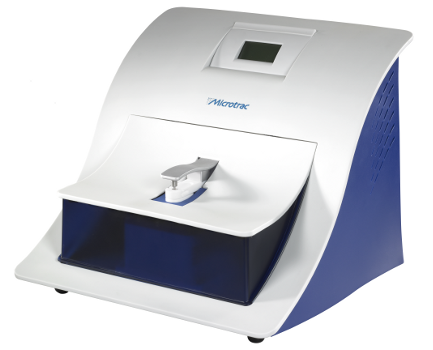

In general, the correlation function describes how long a particle is located at the same spot within the sample. This initial intensity trace is further used to generate a correlation function (Fig. On the other hand, larger particles result in higher amplitudes between the maximum and minimum scattering intensities, as shown in Figure 2 (upper panels). Smaller particles, which are moving at higher speeds, show faster fluctuations than larger particles. The intensity of the scattered light is not constant but will fluctuate over time.

The scattered light is detected over a certain time period in order to monitor the movement of the particles. Small particles do not scatter much light, which leads to an insufficient measurement signal. In contrast, the lower size limit is defined by the signal-to-noise ratio. Therefore, the onset of sedimentation indicates the upper size limit for DLS measurements. If there is sedimentation, there is no random movement, which would lead to inaccurate results. A basic requirement for the Stokes-Einstein equation is that the movement of the particles needs to be solely based on Brownian motion. Further, the equation includes the viscosity of the dispersant and the temperature because both parameters directly influence particle movement. The speed of the particles is given by the translational diffusion coefficient D. The relation between the speed of the particles and the particle size is given by the Stokes-Einstein equation (Equation 1). If you know all other parameters which have an influence on particle movement, you can determine the hydrodynamic diameter by measuring the speed of the particles. As a result, smaller particles are moving at higher speeds than larger particles. The energy transfer is more or less constant and therefore has a greater effect on smaller particles. These collisions cause a certain amount of energy to be transferred, which induces particle movement. The principle of Brownian motion is that particles are constantly colliding with solvent molecules. When particles are dispersed in a liquid they move randomly in all directions. hard sphere, globular, dendrimer, chain stiffness, and degree of branching).Dynamic light scattering (DLS) is based on the Brownian motion of dispersed particles. Hydrodynamic sizes are more easily measured than radii of gyration and can be measured over a wider range of sizes. The conversion from hydrodynamic radius to radius of gyration is a function of chain architecture (including questions of random coil vs. The hydrodynamic radius is not the same as the radius of gyration. Radius calculations are the same except for a factor of two.Īlso, a note to those interested in polymer size. That is, the determined particle size is the size of a sphere that diffuses the way as your particle.įor those who work with protein sizing and other areas where hydrodynamic radius is more commonly used, note that the development here is around diameter. Finally, and most importantly, it reminds the analyst that the particle size determined by dynamic light scattering is the hydrodynamic size. Temperature is even more important due to the viscosity term since viscosity is a stiff function of temperature. The first is that sample temperature is important, at it appears directly in the equation. However, the equation does serve as important reminder about a few points. The calculations are handled by instrument software.

k B is Boltzmann’s constant (we know this).D t is the translational diffusion coefficient (we find this by dynamic light scattering).D h is the hydrodynamic diameter (this is the goal: particle size!).


 0 kommentar(er)
0 kommentar(er)
